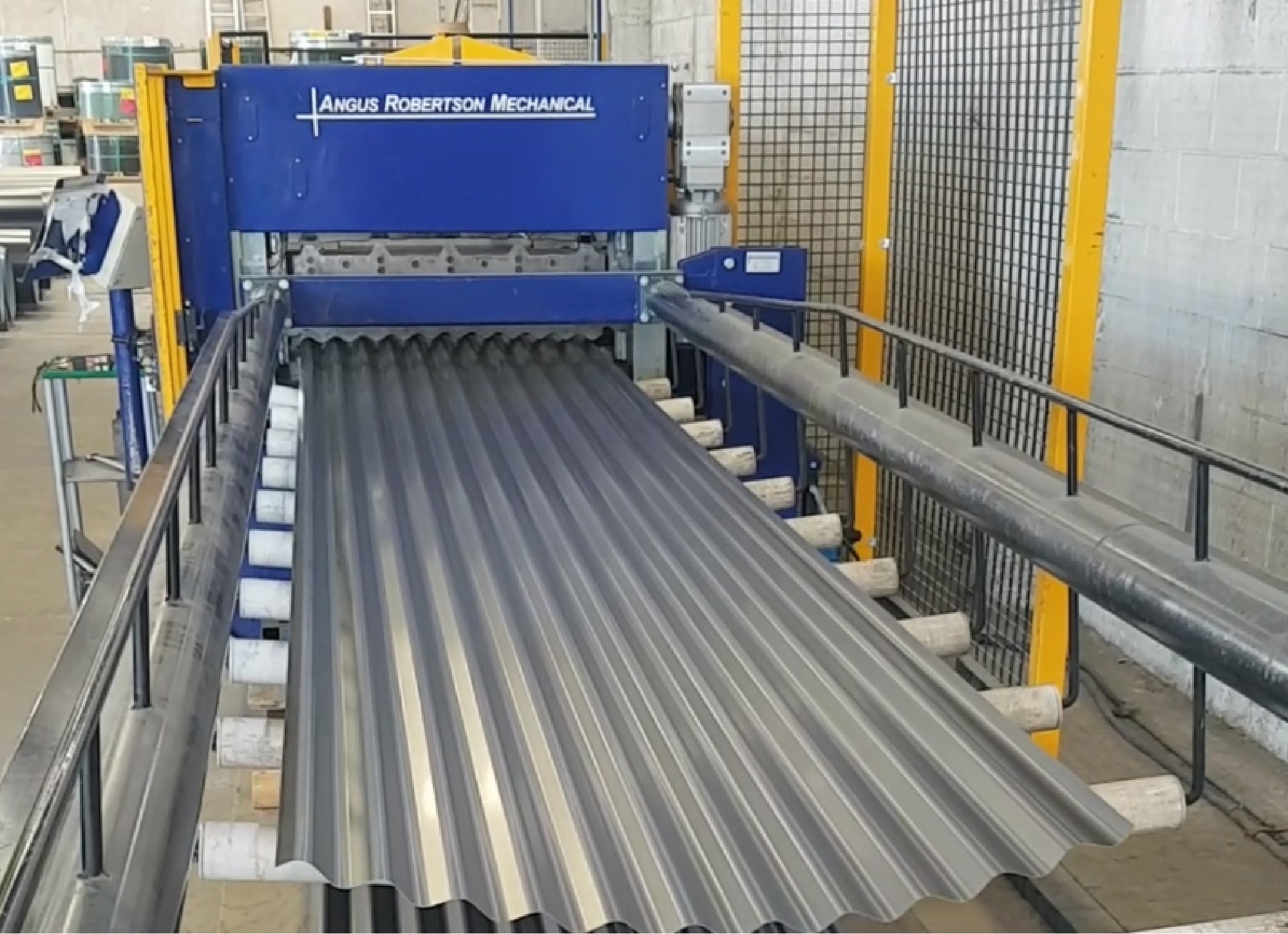Shaping Corrugated Iron
on 19/12/2023

Corrugated iron can be traced back to Britain, where it was invented in the 1820s as a way to stiffen thin sheets of wrought iron. Back then the corrugations were formed 1 furrow at a time, and as you can imagine required a lot of labour to do so.
Things picked up 20 years later with the introduction of machinery that could corrugate the iron by feeding it through a pair of grooved rollers. This made the process faster and and much easier.
While the raw material has changed a lot from these early days, from iron to steel, with galvanising protective coatings and baked on colour finishes, the process to shape the corrugations is much the same process almost 200 years later.
The process involves passing a flat sheet of steel through a series of rollers that have grooves on them. The grooves create the corrugations on the sheet as it passes and enhances its structural properties. These rollers can be adjusted to change the depth, width, and pitch of the corrugations. Once the corrugations are formed the sheet is then cut to the desired length.
Here at Roofline Canterbury our standard corrugations are 76.3mm wide, with a pitch (distance between crests) of between 16mm – 18mm. The video to the right shows our on site process of shaping the iron.
Don’t forget corrugated iron has many advantages over other types of roofing materials. It can withstand harsh weather conditions, such as hail, wind, and fire. It can also reflect heat and light, which helps to keep the building cool and reduce energy costs. Corrugated iron is also recyclable and environmentally friendly.
If you are looking for a reliable and affordable roofing solution, corrugated iron might be the right choice for you. Contact us today to get a free quote and learn more about our services.
You might also like to read
